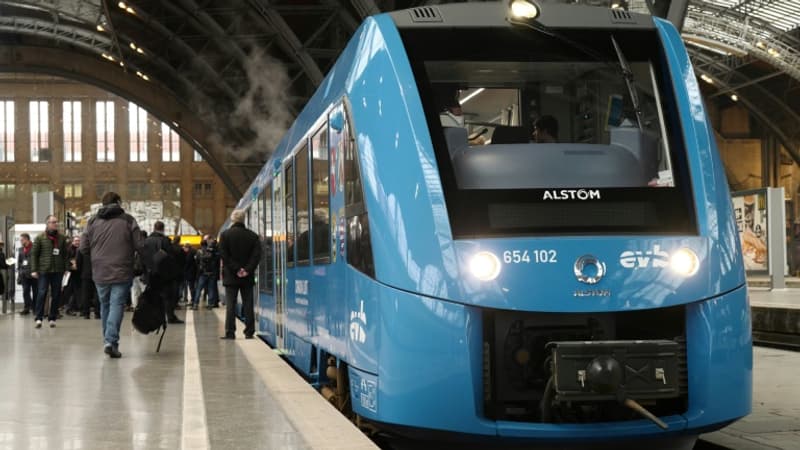The hydrogen train is presented as the solution to replace the polluting diesel trains that are still numerous in Europe and throughout the world, especially in secondary networks. However, the electrification of these lines is not possible given the cost/profitability ratio.
It is a reality in Europe. In Germany, where 20% of rail journeys are made with diesel trains, a fleet of fourteen hydrogen trainsprovided by the French Alstom to the region of Lower Saxony (north), since August it has replaced diesel trains on the hundred kilometers of the line linking the cities of Cuxhaven, Bremerhaven, Bremervörde and Buxtehud, not far from Hamburg.
Hydrogen trains will also run soon in Italy, Sweden and France, where the regions of Bourgogne-Franche-Comté, Occitanie, Grand Est and Auvergne-Rhône-Alpes have ordered twelve trains to enter service by 2025 at the latest.
Zero net commitment
And it could make its first advance outside the Old Continent, precisely in Saudi Arabia. In fact, Alstom signed a memorandum of understanding a few weeks ago with the Saudi Railway Company (SAR) to reflect on the development of hydrogen train solutions adapted to the local climate.
“The objective is to explore opportunities for the future of sustainable mobility in Saudi Arabia (…) to develop and implement rail-related solutions
infrastructure and capabilities aligned with Vision 2030,” read a statement.
“The focus on sustainable mobility solutions, including hydrogen, technology will be a key catalyst for the Kingdom’s diversification and economic growth,” said Mama Sougoufara, Alstom’s Managing Director for the Middle East region. East, East Africa, North Africa and Turkey.
Let us remember that Saudi Arabia has announced its Net Zero commitment (carbon emissions) for 2060, so rail transport will play a key role in achieving this goal. The Kingdom has only four railway lines in a network of just 3,700 kilometres. And except for the few hundred kilometers high-speed line between Mecca and Medina, which is electrified, the trains are pulled there today by 100% diesel locomotives.
The kingdom wants to triple its rail network
But the kingdom intends to invest massively in railways. Last January, Saudi Arabia announced plans to triple the size of its rail network with 8,000 kilometers of new track. A new network that will have to be clean in part, as the country wishes to continue relying on its immense oil resources.
“This is a leap into the future, a woefully unknown future. We must not give up energy security in the name of a publicity stunt.”
The challenge is immense. Because it will not simply be about exporting Coradia iLint hydrogen trains to the country.
“Each railway line is particular and needs to be evaluated and may require adjustments in the products developed, as well as different requirements from customers and operators. The climate and the environment are also among the factors that require studies and can lead to other adjustments and adaptations,” explains the industrialist.
It will also be necessary to deploy the ecosystem that allows the circulation of hydrogen trains: storage and refueling stations (although a hydrogen train is theoretically capable of traveling more than 1,000 kilometers without recharging). Without forgetting the production that is still scarce and not always green.
The ecosystem challenge
Only “green hydrogen”, produced with renewable energies, is considered sustainable by experts. There are other manufacturing methods, much more common, but which emit greenhouse gases because they are made from fossil fuels.
According to the French research institute IFP, specialized in energy issues, hydrogen currently “derives 95% from the transformation of fossil fuels, almost half of which from natural gas.”
So many problems that require colossal investments. Especially since trains are not the only ones thirsty for hydrogen. The entire transport sector, road or air, but also heavy industry, in particular the steel and chemical industries, rely on this technology to reduce their CO2 emissions.
But for the time being, this appetite for railway hydrogen benefits Alstom. If its great competitor, the German Siemens, announced last May a prototype hydrogen train with Deutsche Bahnit will not be put into service before 2024.
Source: BFM TV


